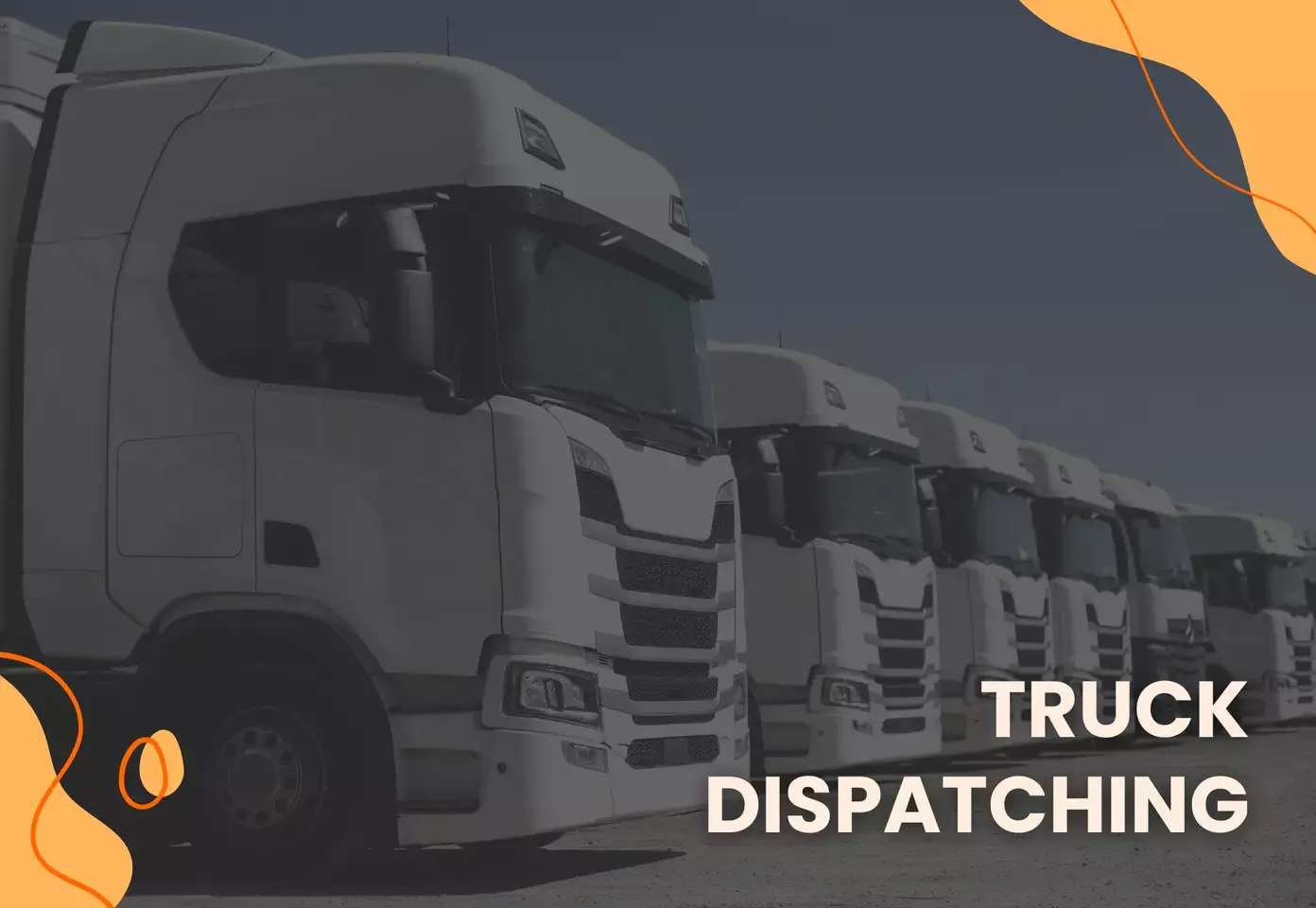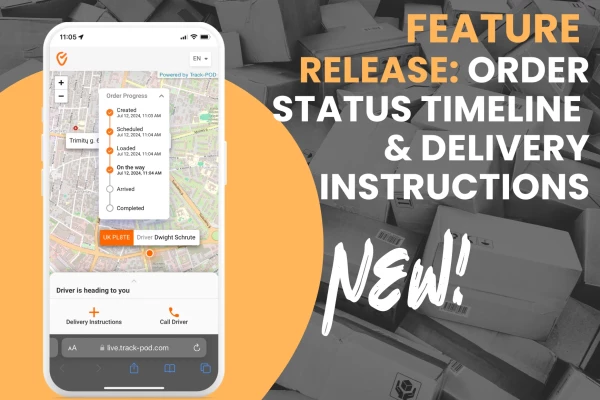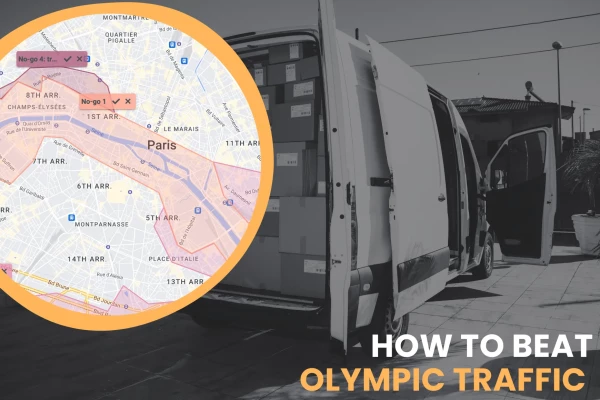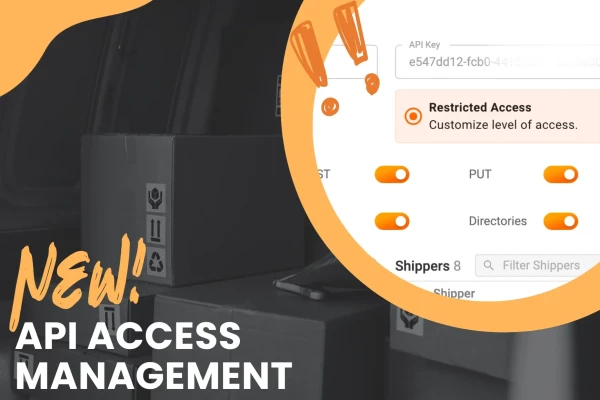Truck Dispatching in 2024 - All You Need to Know

by
Edvardas Pocus
June 13, 2024
A truck dispatcher coordinates trucks and drivers and plans the most efficient and cost-effective routes for deliveries and collections.
Dispatchers supervise the loading of goods and ensure they reach their destination. They monitor the vehicles en route, supervise the drivers, and strive to meet the delivery deadlines.
Good communication skills are essential in this role. Here’s why:
- Dispatchers let customers know when to expect their deliveries.
- They notify customers if there are delays and give them a revised ETA.
- Truck dispatchers deal politely with irate customers who phone to query their deliveries.
- They communicate with their drivers, redirecting vehicles if something unforeseen happens en route.
Truck dispatchers face many challenges in today's logistics environment. Thus, they need strong management and problem-solving skills and the ability to work under pressure.
The surge in e-commerce has created an unprecedented demand for delivery services. The result is a global shortage of competent drivers. The International Road Transport Union (IRU) reports that at least 50 percent of road transport operators struggle to hire skilled drivers.
Moreover, customers are becoming increasingly demanding. Many insist on same-day delivery, and some prefer no-contact deliveries, which creates more complexity in an already challenging schedule.
Table of content
- What is truck dispatching?
- The importance of truck dispatching in logistics
- How does truck dispatching work?
- A step-by-step guide to dispatching
- How to learn truck dispatching
- How to get truck dispatching position
- How to start your own truck dispatching business
What is truck dispatching?
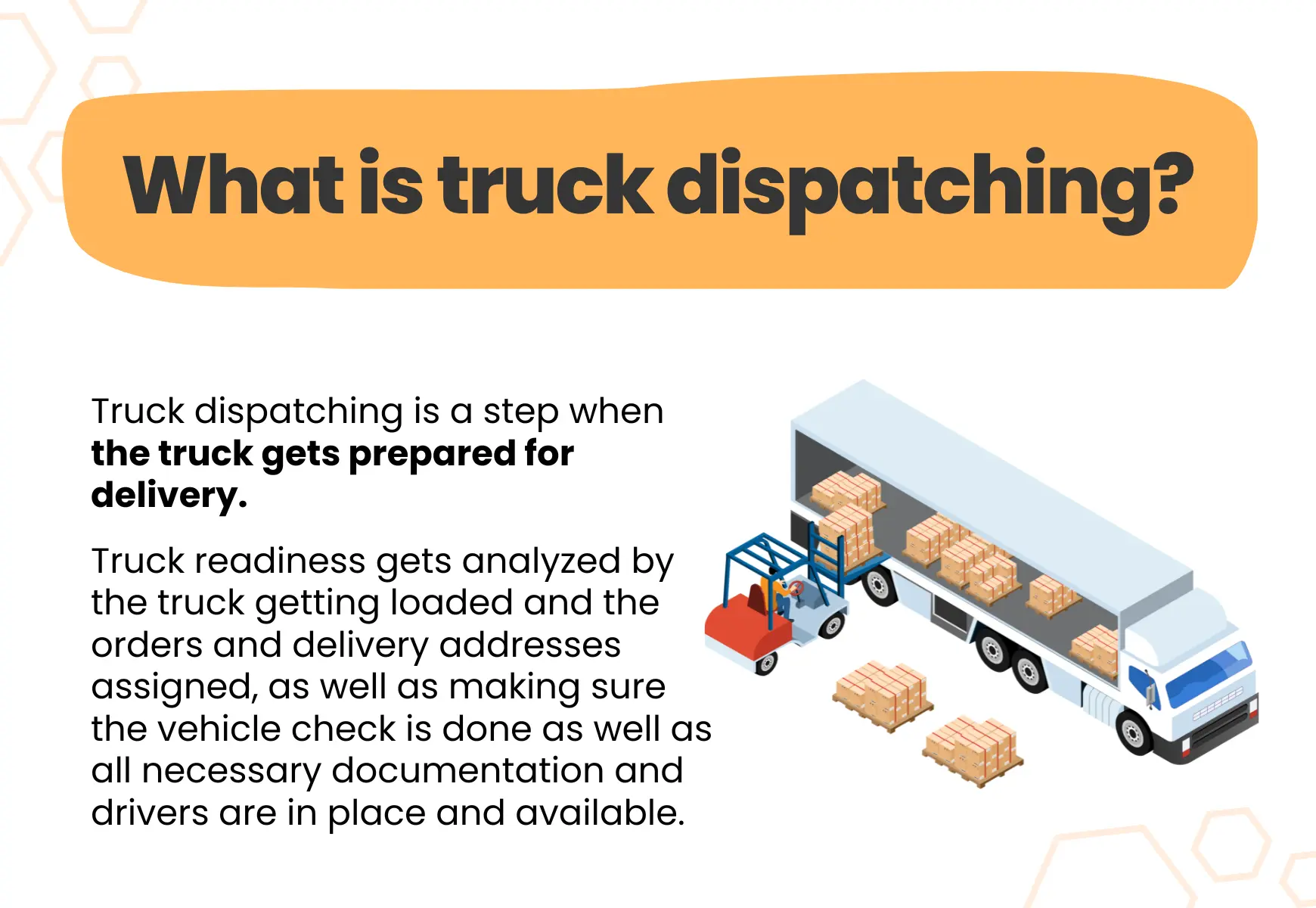
Truck dispatching is the management of goods transportation. It encompasses the loading of vehicles, coordination of drivers and vehicles, and plotting efficient delivery routes.
There’s more to truck dispatching than simply loading a truck and sending it out. Truck dispatchers plan delivery routes and coordinate drivers and trucks. They monitor the vehicles on route and communicate with drivers and customers. When the job is done, they ensure all the paperwork has been completed.
The importance of truck dispatching in logistics
Truck dispatchers are key players in logistics operations.
- They represent the company as they interact with all stakeholders within the supply chain.
- They are responsible for the safe delivery and collection of goods.
Dispatchers organize people and trucks, track their vehicles, and deal with challenges as they arise. They communicate with drivers and customers, solve delivery problems, and lend support.
In short, logistics operations revolve around truck dispatchers.
How does truck dispatching work?
Truck dispatchers must be organized and able to work under pressure. A typical day in the life of a truck dispatcher includes:
- Planning the routes with fuel efficiency and cost savings in mind.
- Scheduling drivers and vehicles for delivery routes.
- Supervising the loading of vehicles and ensuring the correct updating of inventory levels.
- Vehicle tracking for safety and efficiency.
- Managing their drivers. They ensure the safety of other road users and assign drivers to routes based on their strengths and experience.
- Monitoring the routes and reporting to, or receiving feedback from, drivers.
- Optimization of routes based on previous experience and data analytics.
- Communicating with customers as to delivery times and delays.
- Administration and paperwork in terms of stock receipts and customer PODs.
A step-by-step guide to truck dispatching
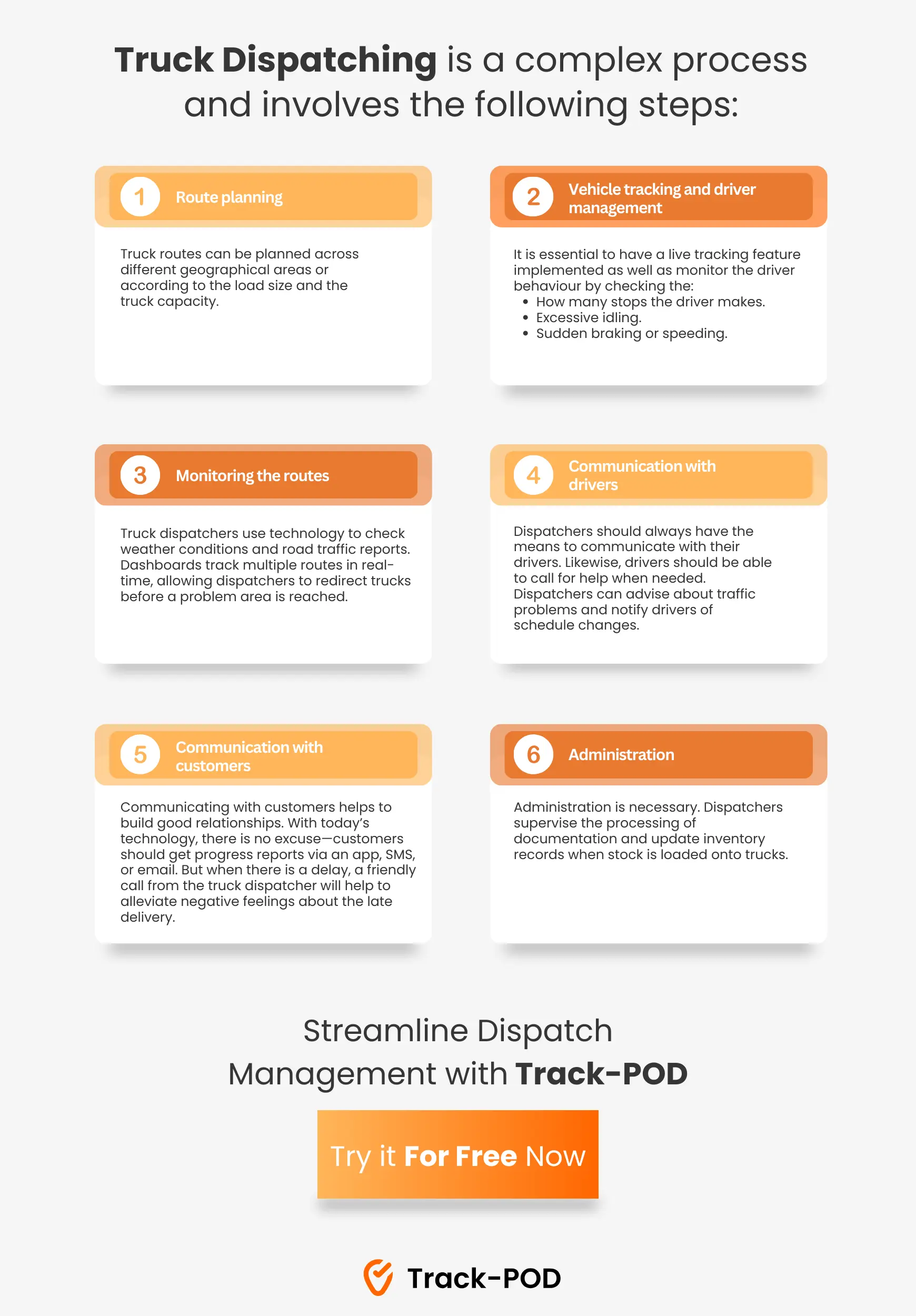
Get a 7-day Free Trial at Track-POD
Route planning
When planning the daily delivery routes, truck dispatchers take the following into account:
- Efficient fuel consumption
- Vehicle and driver safety in terms of road conditions.
- Adverse weather conditions.
- Geographical area.
- Truck capacity.
- Size of the cargo.
- Regulations with regard to drivers’ working hours.
- Driver experience.
Trucks can be distributed across different geographical areas or according to the load size and the truck capacity.
Planning all of this is time-consuming when done manually. The truck dispatcher has to plot each destination using GPS coordinates. Then, they will be viewed on a map of the area to determine the order of the route. Calculating delivery times manually involves working out the distance between stops. The dispatcher also needs to determine how many trucks are required.
You could speed up this process of truck dispatching considerably by automating it with specific route planning software. You could also extract the customer addresses from your customer database. This would eliminate the duplication of information and reduce errors.
With a few mouse clicks, Track-POD’s route-planning solution will help you find the fastest, most efficient delivery routes. The software determines the number of trucks required. It can calculate an even spread of weight across the vehicles and possibly free up one or two vehicles and drivers for use elsewhere.
Vehicle tracking and driver management
Tracking software has improved over the years. At a basic level, trackers record speed and mileage traveled. The Internet of Things (IoT) empowers trackers to communicate with external systems using satellite technology. The tracker transmits information to your server on-site, and the data is stored for later retrieval and analysis.
Dispatch managers can assess driver behavior by checking the following:
- How many stops does the driver make?
- Excessive idling.
- Sudden braking or speeding.
In most countries, drivers are required by law to adhere to regulated working hours and take regular breaks to alleviate driver fatigue and reduce accidents. However, this can only be enforced with vehicle trackers in place.
Trackers also provide vehicle statistics. The more sophisticated trackers can even predict pending breakdowns and suggest vehicle services.
Monitoring the routes
Truck dispatchers use technology to check weather conditions and road traffic reports. Dashboards track multiple routes in real-time, allowing dispatchers to redirect trucks before reaching a problem area.
Communication with drivers
Truck dispatchers should have the means to communicate with their drivers at all times. Likewise, drivers should be able to call in for help when needed. Dispatchers can advise about traffic problems and notify drivers of schedule changes.
Providing drivers with state-of-the-art mobile phones is one way to keep in touch. Track-POD’s multi-functional mobile app for drivers takes communication to the next level. With the app, drivers can:
- Receive instructions.
- Capture the customer’s signature at the time of delivery and upload the POD to the cloud.
- Capture geotags and timestamps as proof of delivery.
- Scan QR and barcodes.
- Photograph deliveries and collections.
The app also helps drivers to capture multiple deliveries with one signature. They can record reasons for rejected deliveries and customer feedback.
Another advantage of the app is that it still works even if the phone loses signal. Once the network is restored, the app reconnects with the system again. Any PODs captured in the meantime will be transmitted as soon as connectivity returns.
Communication with customers
Communicating with customers helps to build good relationships. With today’s technology, there is no excuse—customers should get progress reports via an app, SMS, or email. But when there is a delay, a friendly call from the truck dispatcher will help to alleviate negative feelings about the late delivery.
Track-POD mobile apps for customers ensure that customers are kept in the loop. They can track their delivery throughout the last-mile-delivery process, in the office or out on the road.
Drivers can also communicate directly with the customer with a click of a button on their Track-POD mobile app.
Administration
Administration is necessary attribute of truck dispatching. Dispatchers supervise the processing of documentation and ensure that inventory records are updated when stock is loaded onto trucks.
Ideally, the POD should be uploaded to an ERP or inventory system, and an invoice should be raised against the customer’s account. Track-POD provides full integration functionality to ERP, CRM, and warehouse management systems (WMS.)
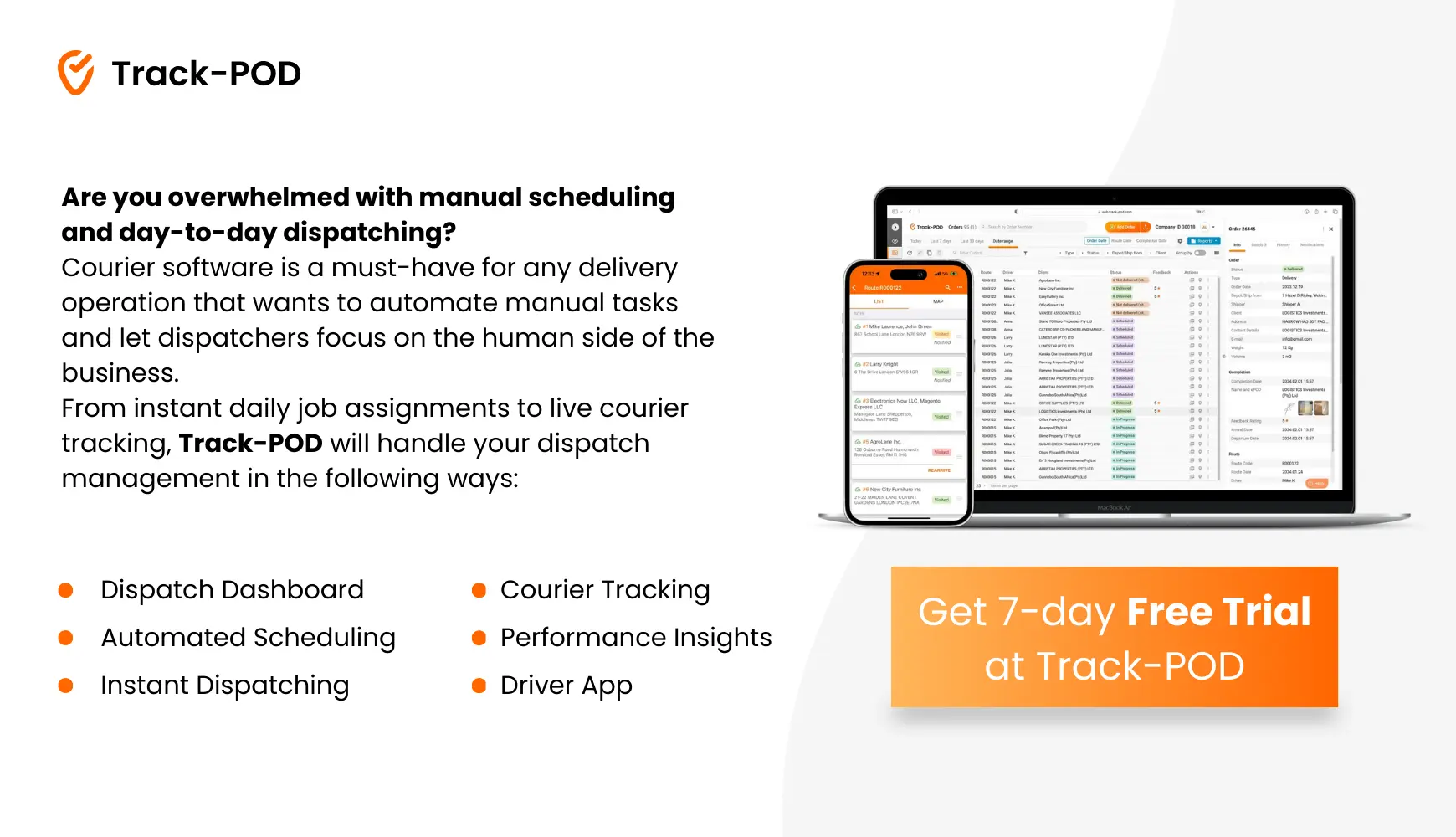
How to learn truck dispatching
The basic requirement for a truck dispatcher is usually a high school or equivalent diploma, such as a GED.
You can work up through the ranks, starting with loading trucks or driving.
You can also take a course in truck or freight dispatching.
To learn truck dispatching, you can take courses that can take anything from a few days to a couple of weeks to complete. Look around for the most comprehensive course within your budget.
You will need to have an interest in logistics and a handful of soft skills that will help you thrive in this dynamic environment:
- Good people and organizational skills.
- Attention to detail.
- An ability to multitask.
- An ability to work under pressure.
Another recommendation is a reasonable level of computer literacy, as many of a dispatcher's functions are now automated. Truck dispatchers also analyze delivery routes and customer data and make improvements where possible.
How to get a truck dispatching position
Take a course and network with lecturers or fellow students to get truck dispatcher's position. Try connecting with industry employees to learn more about the job and the environment.
Many logistics companies publish blogs and newsletters online. Join a logistics forum if you can find one in your area.
And of course, apply for jobs. If you are battling to get a job as a truck dispatcher, don’t despair. You might have better luck finding work as a driver or in customer service. Once you have that experience, you will be more employable as a dispatcher.
How to start your own truck dispatching business
With the necessary experience, you can offer your services as an independent truck dispatcher. Here is a step-by-step guide on how to go about establishing your own dispatching business.
1. Research the market, including current trends and work availability. In this truck dispatching business, you can work as far afield as you like.
2. Register your business. Decide on a name for your business—preferably one that is short and relevant to your type of business. Decide on the type of business you want to run. You can opt for a sole proprietorship, an LLC, or an Inc.
3. Draw up a business plan. This is an essential step as it helps you make important decisions. It should include things like where to operate and what type of dispatching you would prefer. Financial institutions and prospective business partners will insist on seeing your business plan.
Add your short—and long-term goals to your plan and check it periodically to ensure you are still on track.
- Apply for a bank account.
- Apply for finance. You will need a comprehensive business plan before you approach an institution.
- Register your business with the tax office.
- Buy vehicles for your business.
- Take out insurance. Ensure you are covered for accident, third-party, and public liability. Insure all vehicles, buildings, and office equipment.
- Employ the services of a lawyer to help you draw up customer and staff contracts.
- Hire staff.
In summary
Truck dispatchers are dynamic individuals passionate about logistics and ensuring everything works like clockwork.
The key to success is to be organized and arm yourself with the latest and best technology in the marketplace. Track-POD offers single modules like route planning or driver apps. You can also choose the full Transport Management System option. Undecided? Try it for free today—you have nothing to lose.
About The Author
Edvardas Pocus
All things B2B growth marketing.

